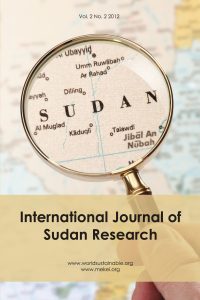Growth performance and slaughter parameters of guinea fowl keets (Numida meleagris) fed different levels of protein and energy, Zohair M. M. Elhag, Aisha E. Mohamed and Ali S. Mohamed
- Version
- Download 156
- File Size 741.79 KB
- File Count 1
- Create Date 5th June 2012
- Last Updated 5th June 2012
Growth performance and slaughter parameters of guinea fowl keets (Numida meleagris) fed different levels of protein and energy, Zohair M. M. Elhag, Aisha E. Mohamed and Ali S. Mohamed
 Zohair Magzoub Mohamed Elhag, Dorcsh Gruppe, UAE
Zohair Magzoub Mohamed Elhag, Dorcsh Gruppe, UAE
Aisha Elfaki Mohamed, Wildlife Research Center, Sudan
Ali Saad Mohamed, Sudan University of Science and Technology, Sudan
Purpose: The purpose of this paper is to investigate the growth performance, carcass and non-carcass components of guinea fowl keets.
Design/methodology/approach: One hundred and fifty day-old guinea fowl (Numida meleagris) keets were divided by stratified random sampling into five equal groups. The groups were assigned at random to five rations: A, B, C, D and E, for eight weeks. Five experimental diets were formulated as A (20.5% CP, 2990 kcal ME), B (high protein 26%: high energy 3150 kcal), C (high protein 26 per cent: low energy 2800 kcal), D (low protein 16 per cent: high energy 3150 kcal) and E (low protein 15 per cent: low energy 2750 kcal). Group (A) served as the control ration. Five birds from each group were slaughtered and carcass and non-carcass components at the end of the experiment were assessed.
Finding: The final live weight in groups B (656.82±0.01) and C (735.11 ±0.01) and the weight gain in group B (600.98+0.01) and C (678.98+0.01) were not significantly (P>0.05) higher than the other treatment groups. Feed intake in group D (917.47+0.010) was not significantly lower than the other groups. The feed conversation ratios (FCR) of group D (3.035 +0.007) and E (3.06 +0.003) were similar. There was no significant difference (P>0.05) and no variations in dressing-out percentages between the control (72.5±0.9) and the test groups, except for group D (69.8±0.72).
Originality/value: The guinea fowl fed with a diet of 26 per cent cp and 2800ME kcal/kg have a higher dressing-out percentage, higher meat protein content and lower fat content. The level of protein had a role in guinea fowl performance and the study indicates that the optimum protein and energy levels for starting guinea fowl is 26 per cent crude protein and 2800 ME kcal/kg. These findings are in agreement with the results of Nahashon, Adefope, Amenyenu and Wright (2005), who conducted a study to assess dietary CP and ME concentrations for optimum growth performance and carcass characteristics of French guinea broilers. They found that birds on a 25 per cent CP diet consumed about 3-4 per cent more than 23 per cent CP, and 3-6 per cent more than 21 per cent CP.
Keywords: Guinea fowl; Performance carcass dressing; Carcass cuts
Attached Files
| File | Action |
|---|---|
| IJSR_VNELHAG_MOHAMED_MOHAMED-Itemid=.pdf | Download |

